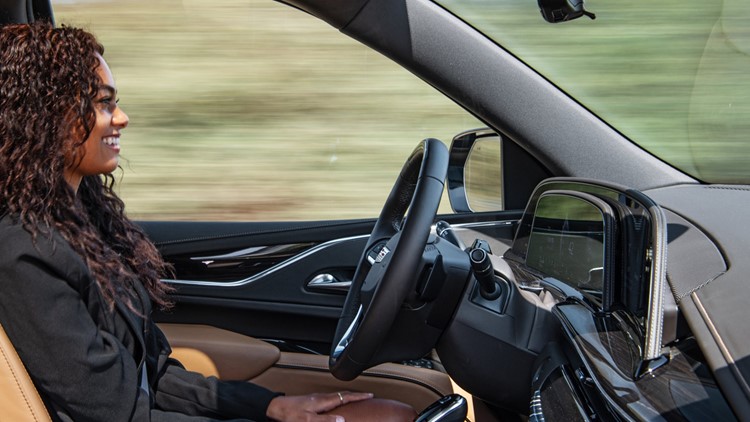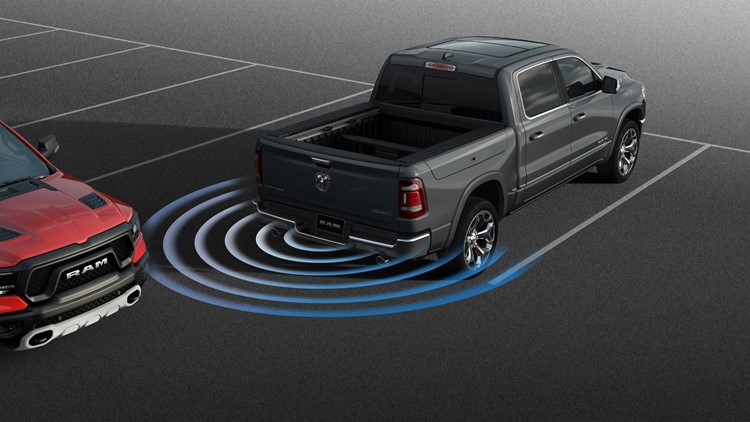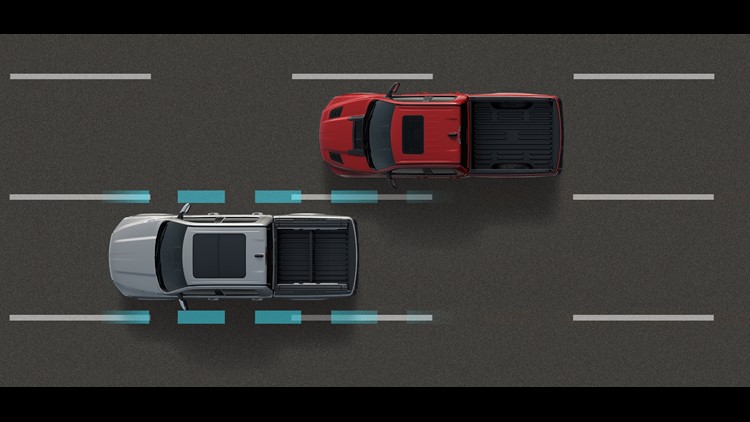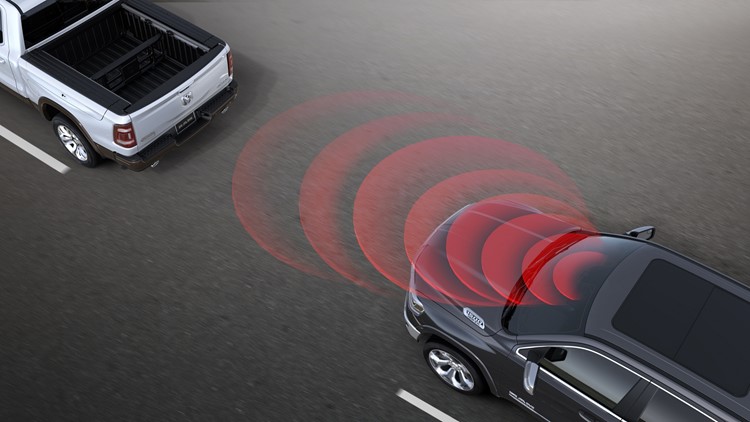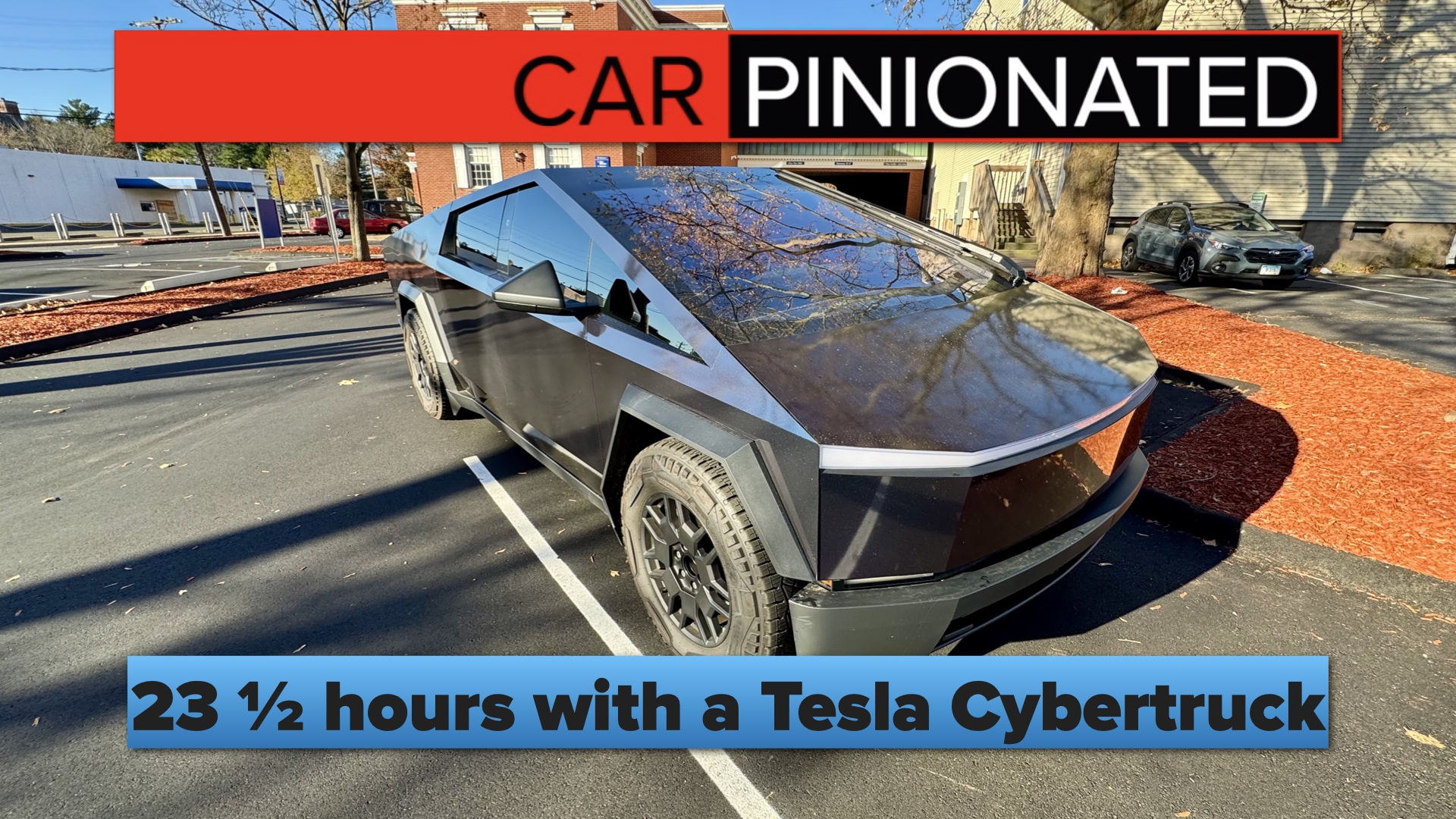INDIANAPOLIS — I was preparing to review the new Chevy Silverado recently when I realized the list of safety technology on the pickup consumed an entire side of a notecard. And, that didn’t include standard equipment like airbags, anti-lock brakes and stability control. Acronyms like HUD, FCA, LDW, and LKA are as bewildering as a Pentagon strategy manual. All of this technology makes driving significantly safer if you know what it is – and how to use it.
How It Works
To work their magic, these systems employ radar, cameras, lasers, and sonar. Look behind enlarged grille logos and rearview mirrors to see radar units and cameras. Subaru’s twin-camera Eyesight system is especially visible peeking around either side of rearview mirrors. Additional sensors in the bumpers and mirrors provide 360 degrees of electronic cushion around the vehicle – both on the road and during parking maneuvers.
Adaptive cruise was a foundation of the latest tech when it debuted on Lexus and Mercedes models two decades ago. Unlike normal cruise control, the system can automatically keep a safe distance from vehicles ahead by reducing throttle input, or if necessary, by applying the brakes. Drivers can adjust the distance for which they feel comfortable. Going further, engineers have expanded capability to Forward Collision Alert systems that detect pedestrians, bicycles, and other vehicles. Drivers get audible and/or visual alerts to danger, and if they don’t react, the vehicle brakes to avoid a collision.
Those systems protect vehicles in forward motion, but other systems protect their flanks. One of the earliest was a side blind zone alert that beeps and flashes indicators in sideview mirrors to make drivers aware of other drivers. The latest pickup truck systems even extend blind zone detection to the full length of trailers behind them. Lane Departure Warning and Lane Keep Assist systems employ cameras to "read" lane markers. Simple versions beep if drivers cross lines without signaling while more advanced systems can nudge the vehicle back into its lane, sometimes vibrating the steering wheel or seat to gain driver attention.
Protecting Your Rear
But, how do vehicles protect their rears? Parking sensors and 360-degree "around view" cameras help while maneuvering in tight spaces, but rear cross path detection alerts drivers to pedestrians and other vehicles approaching the vehicle while backing. Think of cars racing down a busy street into which you’re backing. Simple versions provide an alert while more sophisticated versions can automatically apply brakes to avoid an accident.
These systems provides a comprehensive electronic safety blanket, but automakers employ some other pretty cool safety tech. Some of my favorites are head-up displays that make speed, navigation, radio, and safety functions appear to hover above the hood, in the driver’s line of sight. GM’s driver Safety Alert Seat vibrates in the direction of danger. Hyundai employs blind zone cameras to project side images into the dashboard uses the blind spot system to prevent passengers from stepping into traffic. Rear seat sensors remind parents of offspring when turning off the vehicle.
Soon, all of these systems will converge to provide the holy grail of travel: Vehicles that drive themselves. Cadillac is currently rolling GM’s hands-off Super Cruise system across its range while Tesla has Auto Pilot. Virtually all luxury brands, and many mainstream ones too, have lane-centering systems that will evolve into fully autonomous steering over the next decade. When you sit behind a steering wheel that turns itself, remember that technology all started decades ago with radar cruise control.
When you shop for your next vehicle, be sure to ask what crash avoidance systems are available. Depending on the system, its sophistication, and automaker that offers it, prices range from nothing (standard) to several thousand dollars – a small price to pay for your family’s safety.
Storm Forward!
Casey Williams is former auto correspondent for WFYI and the Indianapolis Star plus a contributor to the Chicago Tribune’s Sunday Auto Page. He has reviewed vehicles and covered the auto industry for over 25 years. He lives with his family in Broad Ripple. E-mail him at AutoCasey@aol.com; check his reviews on YouTube at AutoCasey.


